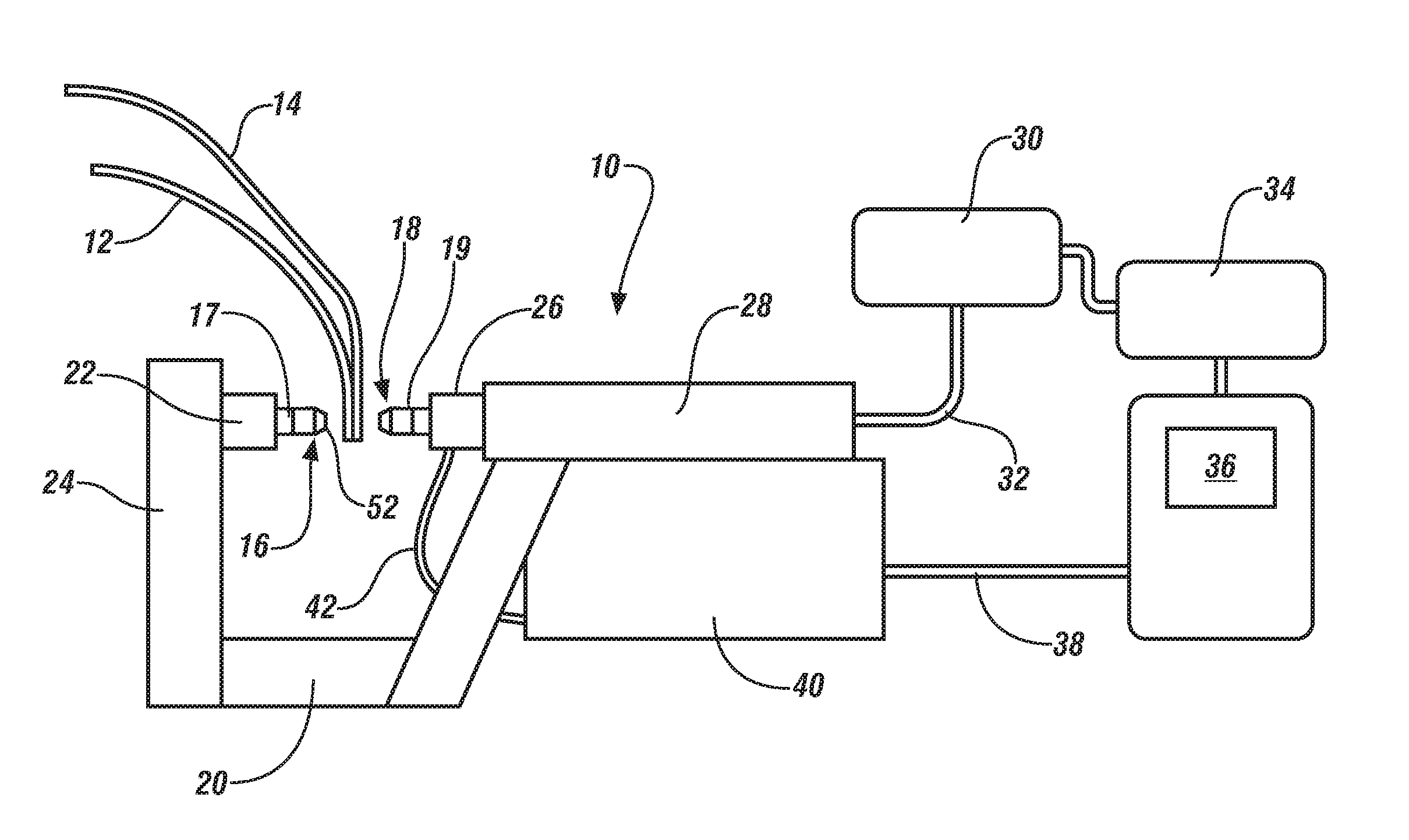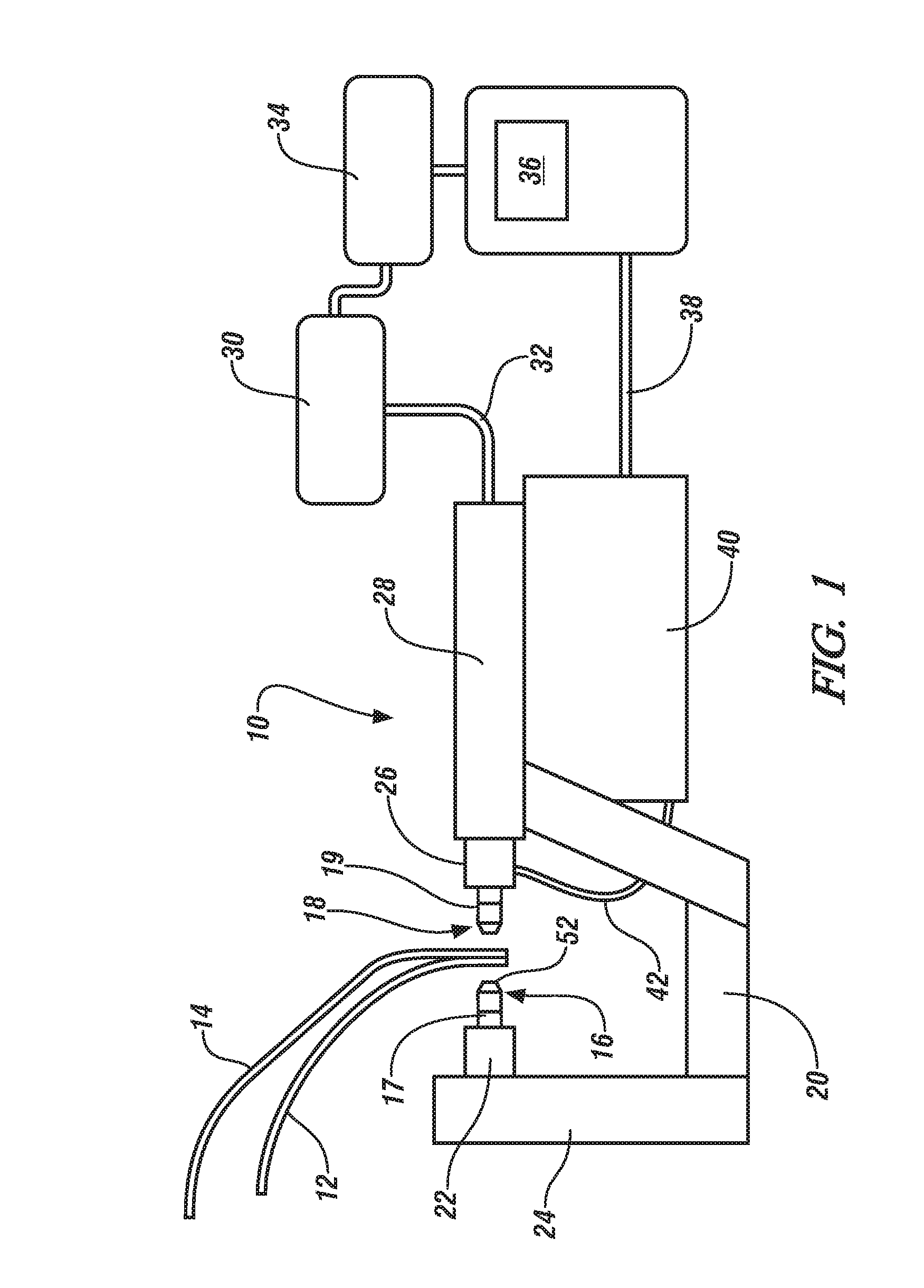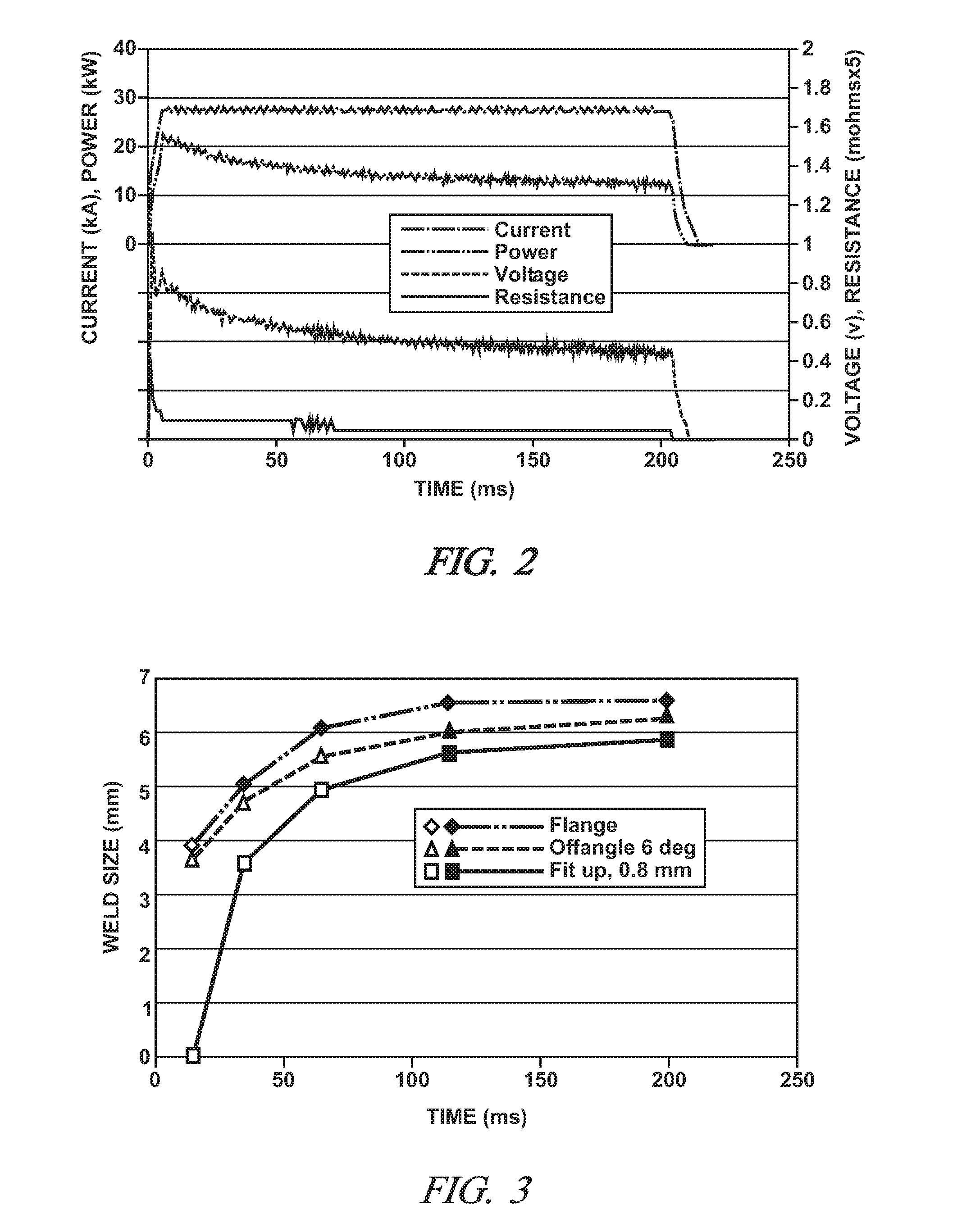Weld schedule for resistance spot welding of aluminum alloy workpieces
- Summary
- Abstract
- Description
- Claims
- Application Information
AI Technical Summary
Benefits of technology
Problems solved by technology
Method used
Image
Examples
Embodiment Construction
[0024]The weld schedule of this invention may be practiced using welding equipment such as that illustrated schematically in FIG. 1. FIG. 1 in this specification is also presented as FIG. 1 and described substantially as follows in our co-pending U.S. patent application, published as U.S. 2011 / 0266260 and also as FIG. 1 as described in U.S. Pat. No. 6,861,609 of one of us.
[0025]In FIG. 1, a representative spot welding gun apparatus 10 with associated equipment (e.g., items 30, 32, 34, 36, 38, 40, and 42 described below) utilized in spot welding apparatus for aluminum-based alloy(s) workpieces is illustrated. In such welding operations, an assembly of two or more aluminum alloy sheet panels 12 and 14 to be welded is prepared and delivered by a conveyor or other device to the welding gun apparatus 10. The welding gun apparatus is typically mounted on a robot which moves the welding gun apparatus along the edges (e.g., flanges for welding) of aluminum alloy sheet panels 12, 14 to rapid...
PUM
| Property | Measurement | Unit |
|---|---|---|
| Time | aaaaa | aaaaa |
| Time | aaaaa | aaaaa |
| Time | aaaaa | aaaaa |
Abstract
Description
Claims
Application Information
 Login to View More
Login to View More - R&D
- Intellectual Property
- Life Sciences
- Materials
- Tech Scout
- Unparalleled Data Quality
- Higher Quality Content
- 60% Fewer Hallucinations
Browse by: Latest US Patents, China's latest patents, Technical Efficacy Thesaurus, Application Domain, Technology Topic, Popular Technical Reports.
© 2025 PatSnap. All rights reserved.Legal|Privacy policy|Modern Slavery Act Transparency Statement|Sitemap|About US| Contact US: help@patsnap.com



